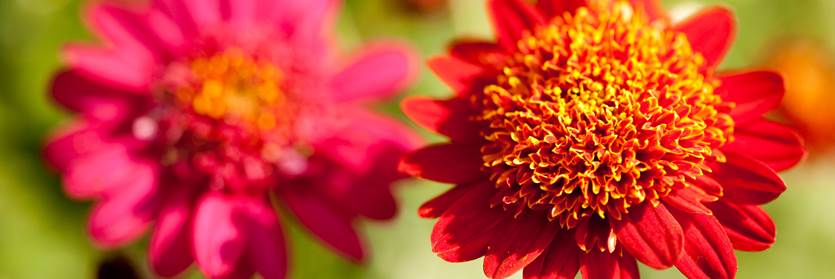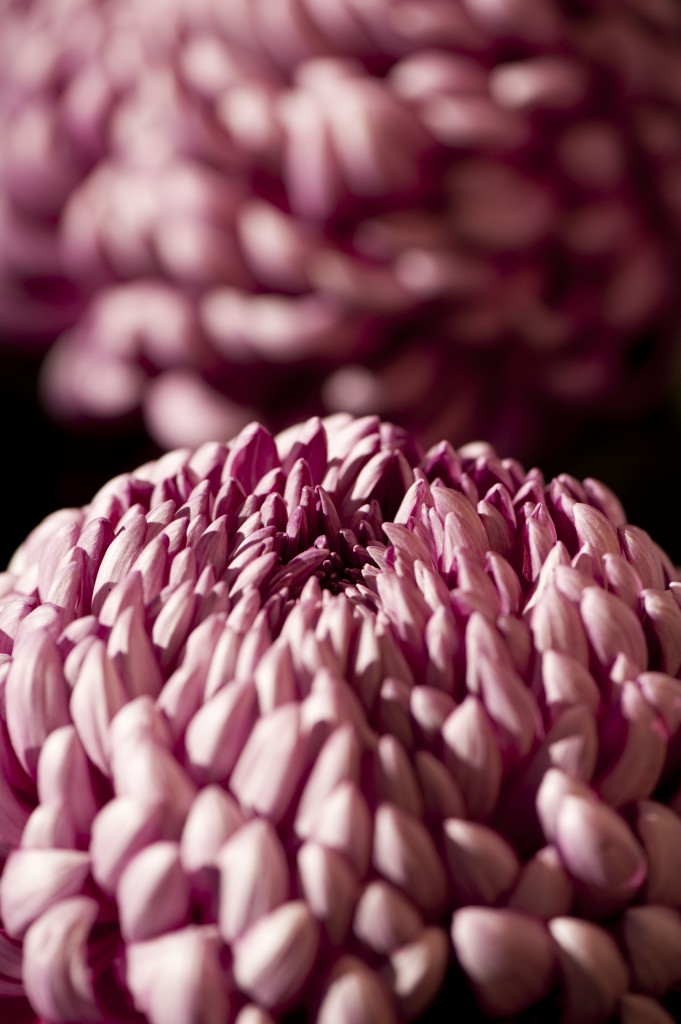Morning Eye Candy: A Bird in the Hand
Posted in Photography on November 11 2010, by Plant Talk
Is it really worth two in the bush?
Chickadee (photo by Ivo M. Vermeulen).

Inside The New York Botanical Garden
Posted in Photography on November 11 2010, by Plant Talk
Is it really worth two in the bush?
Chickadee (photo by Ivo M. Vermeulen).
Posted in Exhibitions, Holiday Train Show on November 10 2010, by Plant Talk
That’s sound logic, right? If you go by the decorations at the mall, its been the holidays for moths, so who even knows? In any case, we don’t want to overwhelm you before we’ve bought our turkeys yet either, but the arrival of a few truckloads of giant evergreens is always an occasion.
Earlier this week, The Garden received a special delivery of nine Abies fraseri all the way from NW North Carolina. Better known as the Frasier fir, these trees are popular choices during the holidays for their ability to retain needles long after being cut. The largest, which has been placed in the fountain by the visitor’s center measures a whopping 25 feet high. The eight other trees, which are all about 10-15 feet each, will surround the fountain as well.
Now that the trees have been placed, the next step is decorate them with approximately 400 strands of lights (that’s 20,000 bulbs!) in time for our annual tree lighting ceremony. (stay tuned for more details on that!)
Posted in Around the Garden on November 10 2010, by Plant Talk
 |
Rustin Dwyer is Visual Media Production Specialist at The New York Botanical Garden. |
The New York Botanical Garden is usually closed to the public on Mondays, but that doesn’t mean our groundskeepers and horticulturalists get the day off. Quite the opposite actually. Mondays are the days when the huge projects get done; projects that would interfere with guests enjoyment of the grounds or require large, heavy machinery.
Here’s a short video highlighting the move of a katsura tree (Cercidiphyllum japonicum) from this Monday. It was a pretty big job that required a lot of hands (especially when this little guy jumped out of the rootball!).
Enjoy!
Posted in Photography on November 10 2010, by Plant Talk
So many fascinating things happen in the Garden’s 50-acre native Forest, sometimes we forget to simply marvel at its age and beauty.
A Forest trail (photo by Ivo M. Vermeulen).
Posted in Learning Experiences on November 9 2010, by Plant Talk
| Ann Rafalko is Director of Online Content. |
I love bulbs. When we bought our house upstate a few summers ago, I couldn’t wait to see what would come up in our yard come spring. After several chilly gray months, my impatience … I mean patience, was rewarded with a dazzling display. It turns out our front garden is a perfect place for naturalizing not just daffodils, hyacinths and crocuses, but also tulips!

And so for the past two falls I have diligently supplemented the beautiful display entrusted to us by our old farm house’s previous owners. But the thing I’m realizing now is that I don’t really know how to plant bulbs. I mean, sure, I can dig a little hole and stick the bulb in (and the plantings have become much more successful now that my husband knows which end of the bulb goes up), but I don’t know anything about designing my bulb plantings. And don’t even get me started on integrating bulbs with perennials!
So it is with great anticipation that I am looking forward to a class being offered here at the Garden on Tuesday, November 23 with acclaimed landscape architect Jacqueline van der Kloet and renowned Dutch bulb expert Frans Roozen. I absolutely love the Seasonal Walk here at the Garden which was designed by Jacqueline and her collaborator Piet Oudolf (with whom she worked on Manhattan’s High Line). It is a gorgeous, long stretch of a garden that intermingles bulbs and tubers, perennials, flowering shrubs, trees, and amazing ornamental grasses. Jacqueline will offer insight into this wonderful technique while Frans will offer technical advice on planning, planting, and naturalizing bulbs.
The class is being held here at The New York Botanical Garden. It’s from 10 a.m. – 12 p.m. and costs $28 for members, $31 for non-members. You can sign-up here.
Posted in Photography, Uncategorized on November 9 2010, by Plant Talk
The Peggy Rockefeller Rose Garden is closed for the season. One last look as we say goodbye until spring.
The Rose Garden in fall (photo by Ivo M. Vermeulen).
Posted in Shop/Book Reviews on November 8 2010, by Plant Talk
 Much as you would expect from the editor of a website called Fashionista, Lauren Sherman is a stylish young woman. But, unlike some of her fashion news peers, Lauren steers clear of dressing in all black (most days) and gratuitous trends, opting instead for an eclectic, self-confident mix of girly and masculine that comes off as classically feminine.
Much as you would expect from the editor of a website called Fashionista, Lauren Sherman is a stylish young woman. But, unlike some of her fashion news peers, Lauren steers clear of dressing in all black (most days) and gratuitous trends, opting instead for an eclectic, self-confident mix of girly and masculine that comes off as classically feminine.
It’s a sensibility–inspired by much-loved trips to Europe with her technology-blogger fiancé and time spent living in London–that carries through to her “Favorite Things,” a list of gracious, classic gift picks from the Shop in the Garden.
Posted in Exhibitions, Gardens and Collections, Programs and Events on November 8 2010, by Plant Talk
| Ann Rafalko is Director of Online Content. |
 Chrysanthemums. You see them everywhere this time of year; their cheery little faces in a rainbow of hues (all except blue!) brightening up front stoops, fire escapes, tree guards, and otherwise bedraggled gardens all over the city. But trust us, you’ve never seen chrysanthemums like this!
Chrysanthemums. You see them everywhere this time of year; their cheery little faces in a rainbow of hues (all except blue!) brightening up front stoops, fire escapes, tree guards, and otherwise bedraggled gardens all over the city. But trust us, you’ve never seen chrysanthemums like this!
On display now for a limited time–just until Sunday, November 21–at the Bourke-Sullivan display house is a wonderland of Japanese chrysanthemums. These mums are far more than the plastic pots you can jump in your car and buy at your local gardening center. These mums are coddled and cultivated and trained and coaxed into a kaleidoscopic array of shapes–dizzying spirals, sprawling umbrellas, cascading waves–each form composed entirely of just one plant. That’s right. One plant.
Posted in Gardening Tips on November 8 2010, by Sonia Uyterhoeven
 |
Sonia Uyterhoeven is Gardener for Public Education. Join her each weekend for home gardening demonstrations on a variety of topics in the Home Gardening Center. |
By this time of year, you probably have begun saving seeds of your favorite annuals and vegetables. Seed saving is fairly straight forward as long as you follow a few simple rules.
When collecting seeds in your garden, look for healthy plants that possess the characteristics you desire. If you have a pot marigold (Calendula) with a pale apricot color that you admire, collect seeds from the paler specimens to try and keep the nice shade. You will always get variation, but you are participating in the selection process as, in essence, an amateur breeder.
Many of your flowers and vegetables are cross-pollinated, Mother Nature’s way of passing along diversity. If you want the seeds to be pure, isolate the plant (generally by building a cage or covering for it) or pollinate by hand, but this is generally only necessary for commercial growers or for seed-saving enterprises.
Most important is to always choose healthy plants so that you end up with healthy, viable seeds. Don’t waste your time collecting seeds from F1 hybrids. They will never come true to seed, and you will get some strange results. Heirloom varieties, on the other hand, tend to be fairly stable and are wonderful to collect.
Posted in Photography on November 8 2010, by Plant Talk
Those aren’t magic carpets. They’re giant rolls of sod.
Re-sodding the Conservatory Kitchen lawn (photo by Ivo M. Vermeulen).